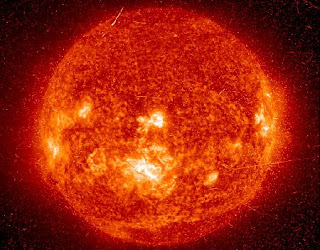
A long time from now, a time far, far, far away... Nuclear fusion! Is it a climate change solution or a just a dream?
A popular saying is that "Nuclear Fusion is 50 years away... and that was fifty years ago." Nuclear fusion often gets confused with conventional nuclear power production, called nuclear fission. When people discuss nuclear reactors in conversation they are referring to fission, which is the process of creating energy by splitting atoms off a heavy radioactive element, usually uranium. In contrast, nuclear fusion is the process by which you take smaller atoms and combine them to make a bigger molecule and the end result is usable energy. For an easy visual: imagine slapping your hands together- this will be fusion. Now interlock your hands and quickly separate them- this is fission. In both instances something is created: sound. It's a little more complicated than that, but in principle it's a great start to understand.
Scientists long ago discovered the sun is run off of nuclear fusion; that hydrogen atoms colliding into each other to form helium and create the ball of energy at the center of our universe. Whether you're splitting or colliding atoms, energy is released like sound being generated when you clap your hands together or released them from interlocked fingers.
On earth, we don't create fusion by using hydrogen; we use deuterium and tritium, both non-radioactive, unlike uranium used in fission, which is radioactive. Radioactivity does occur: it is in the process of nuclear fusion that released neutrons will form radioactive isotopes in the walls of the reactor. Using the hand-clapping example, some of the sound created is harmful. The radioactivity has been addressed by using proper reactor wall materials. In doing so, after 100 years the waste will be no more radioactive than ash from a coal-fired power plant of the same size (RISO International Lab, 2007).
The fuels: deuterium and tritium are vastly abundant and evenly spread amongst nations on earth, which means less geopolitical clout on energy sources. Deuterium can be be extracted from water: just 1 cubic meter of water can produce 36g of deuterium, and the extraction process is cheap compared to the energy the deuterium would provide (RISO, 2007). Tritium is produced by bombarding lithium from neutrons in the fusion process. Worldwide, existing resources of lithium "would be able to power the world for a million years, and deuterium reserves would last for 50 billion years." Nuclear fusion always sounds great, just one problem: fusion is 50 years away, now where have I heard that before...
The current project is the ITER (iter is Latin for "the way") housed in France. ITER is based on the Topomak reaction design, or simply a hollow donut shaped tube where particles are accelerated to the point of collision hopeful creating fusion. Fusion is created, but the energy input is more than the energy output. It's like eating to get hungrier, and that's no way to power the future. For climate change the big date is 2050 to stabilize global warming; the best estimate for industrial nuclear fusion is 2045, too little too late. Nuclear fusion for now is a beautiful dream, but the world's been sleeping long enough. It's time to wake up.















1 comments:
Aneutronic fusion doesn't release neutrons and will be a solution for the climate change in less time.
Post a Comment